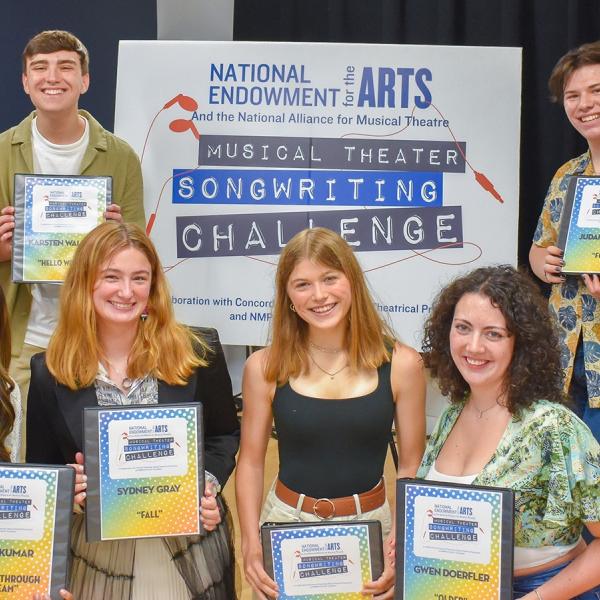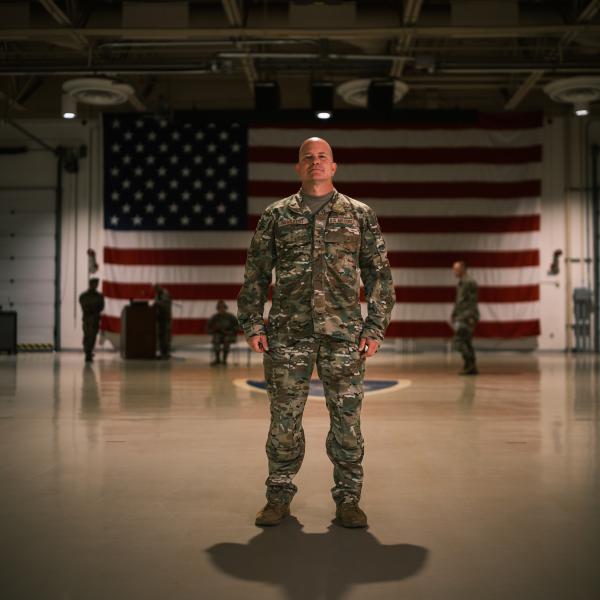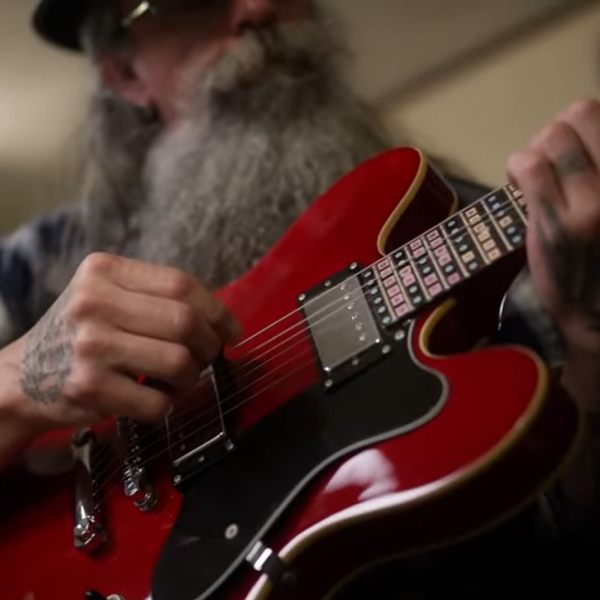Grant Spotlight: Harmony Project Productions (Columbus, Ohio)
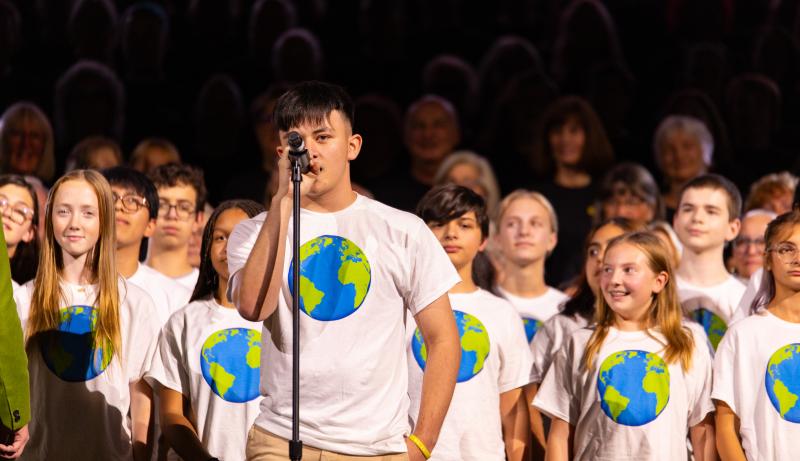
Edwin, an immigrant from El Salvador, sings in English at Harmony's 2023 Ohio Theatre concert. Edwin recently immigrated to the United States and is learning English and performance skills through Harmony's Student Art. Photo courtesy of Harmony Project Productions, Inc.
Harmony Project Productions, based in Columbus, Ohio, was founded in 2009 by Creative Director David Brown with the goal of fostering a more unified and connected community through the power of music. Brown said, “With my background as a musician and community builder, I believed that music could serve as a powerful tool to bridge social, cultural, and economic divides. I saw an opportunity to bring people together by forming a choir open to anyone, regard-less of musical background, and focusing on shared experiences rather than individual talent.” This approach shifted the focus away from musical ability as a prerequisite and toward a collective commitment to strengthening community connections through the shared act of singing.
The organization launched with a 100-member community chorus and quickly grew into a broader movement, embracing voices including students, professionals, individuals with disabilities, and those affected by the criminal justice system. Chorus members not only performed together but also participated in service projects, earning their place on stage through their contributions to the community. “Harmony Project does not refer to its musical groups/pro-grams as choirs: rather, Harmony uses the term “chorus,” which by definition means more than singers. The idea is that a choir is a finite group that performs, but a chorus is an ever-expanding community,” said Brown.
This month, the NEA announced that Harmony Project is one of nine organizations selected to receive funding for a project that demonstrates promising local arts and cultural approaches for addressing social connection, belonging, and mental health through the arts. Harmony Project’s Arts, Health, and Well-being Demonstration Project is for Being Human—a year-long, statewide initiative that will integrate the fields of mental health, human services, and performing arts by utilizing the community chorus model as a tool to address loneliness, foster social connection, and enhance mental health and well-being at both individual and community levels.
We spoke with Brown about the development of the Being Human project, Harmony Project’s impact on people of all backgrounds, and the power of music in strengthening communities.
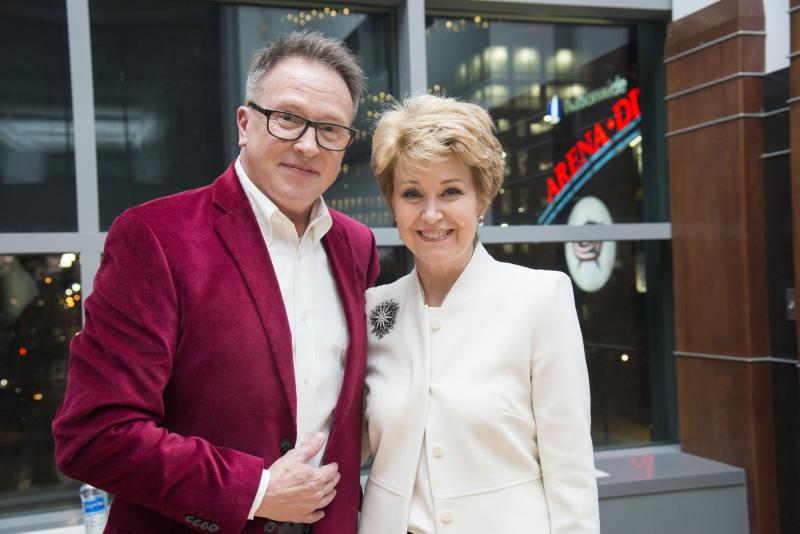
Harmony Project Founder David Brown with Jane Pauley who hosted Harmony's 2017 Concert for US at Nationwide Arena. Photo courtesy of Harmony Project Productions, Inc.
NEA: What are the ways in which music serves as a bridge to create shared human experiences and empower individuals across different backgrounds?
DAVID BROWN: Music transcends cultural, linguistic, and socioeconomic barriers. Regardless of background, people can connect through rhythm, melody, and harmony, fostering a sense of unity and shared understanding. Music evokes emotions that resonate universally—joy, sorrow, hope, and resilience. This emotional connection creates empathy, helping people relate to each other's experiences and perspectives. Group musical activities, such as a chorus or community performances, create a sense of belonging and cooperation. Individuals contribute their unique voices or talents toward a common goal, strengthening social bonds. Engaging with music can foster personal healing and growth. For individuals with disabilities or those impacted by trauma, participating in music programs can enhance self-esteem, reduce stress, and encourage self-expression. Harmony Project utilizes music and the arts as a way to engage its audiences as participants rather than solely as observers.
NEA: Tell me more about what your organization does.
BROWN: Harmony Project unites diverse communities through music, arts, and volunteer community service to foster social connection and inclusion while creating positive and lasting change. Harmony Project works with immigrant and refugee students, providing arts education and creative opportunities that help them express their identities, share their stories, and build connections within their new communities. These programs foster cultural understanding and empower youth through music, art, and performance. Our programs for adults with disabilities focus on inclusion and self-expression through music and the arts. Participants engage in performances, creative workshops, and collaborative projects, promoting confidence, social connection, and a sense of purpose.
Harmony Project collaborates with incarcerated men and women, offering music and arts programs that provide creative outlets for personal reflection and transformation. These initiatives aim to humanize the prison experience, reduce recidivism, and support reentry into society with dignity and purpose.
The heart of Harmony Project is its 500-voice community chorus, composed of individuals from diverse backgrounds. The chorus brings people together, demonstrating the power of collective voices to break down social, economic, and cultural barriers through dynamic performances that inspire unity and compassion. Harmony provides opportunities for community members to “experience Harmony” without committing to a full season of rehearsals. Harmony uploads voice parts that are accessible to the public, then invites people to show up prepared to per-form at a location such as a rooftop of a museum, Times Square, Union Station [in New York City], or a shopping mall. An instant community is created through a vocal performance and new connections are made among people who have at least one thing in common: singing together.
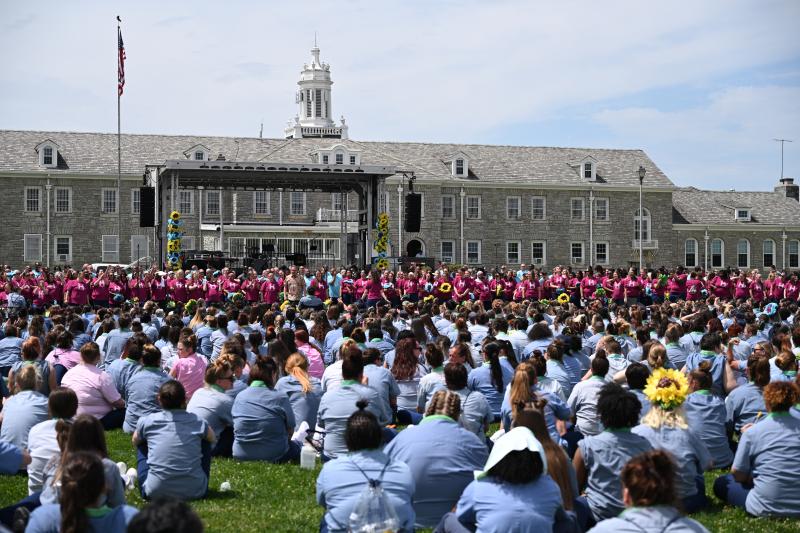
Harmony's Sunflower Prison Arts Festival outdoor performance by incarcerated men and women, 2024. Photo courtesy of Harmony Project Productions, Inc.
NEA: What need in the community launched the Being Human project?
BROWN: The Being Human project addresses the critical need for increased social connection, belonging, and community mental health. By bringing together 1,000 voices from diverse back-grounds across Ohio, it aims to bridge social, cultural, economic, and geographic divides, demonstrating the power of music and collective action to foster unity and strengthen communities. By expanding to include chorus groups from across the state, the Being Human project will create a network of like-minded artists/performers who believe in the power of music and the arts to improve community mental health. Ohio is a microcosm of the nation with significant divisions and stagnant segregation among cultures, races, socioeconomics, education, religious beliefs, and political ideologies. The Being Human project seeks to lessen those divisions by connecting people whose differences have kept them apart and uniting them through the power of singing together, working side-by-side, and creating one powerful voice from many.
Documentary-style videos and social media will play a vital role in amplifying the Being Human project’s story, reaching a wider audience and extending its impact. By showcasing personal stories from participants, behind-the-scenes footage, and the transformative journey of the 1,000-voice chorus, these platforms will highlight themes of unity, mental health, and community service. This multi-media approach ensures the project’s message resonates far beyond the concert arena, encouraging others to embrace the power of the arts to create meaningful change.
NEA: What is the selection process for the choral ensembles and music groups?
BROWN: Selection will focus on including choirs from diverse cultural, economic, and social backgrounds to reflect the project's mission of unity and belonging. While musical skill is valued, emphasis will be placed on commitment to the project's goals of social connection and community service rather than technical proficiency. Harmony Project will collaborate with existing choral networks, arts organizations, and community leaders to identify groups that align with the project's vision. Efforts will be made to include choirs from urban, suburban, and rural areas to ensure broad geographic representation across Ohio.
NEA: Can you provide an overview of the preparation process for the upcoming concert?
BROWN: The Being Human project kicks off with thoughtful song selection, focusing on pieces that reflect themes of unity, inclusion, personal and communal renewal, and shared human responsibility for one another. Harmony Project will then distribute pre-recorded voice parts for chorus members to download, allowing participants to learn their music individually, even during daily commutes. This innovative approach ensures accessibility and consistent preparation across the state.
The Harmony team has researched community chorus groups throughout the state, and groups that align with the Harmony mission of inclusion. Chorus participants from different regions will engage in localized rehearsals, building anticipation for the grand gathering. Each community will also take ownership of service projects tailored to their unique needs, reinforcing the project’s mission of fostering social impact. Finally, the excitement culminates on May 1st, when all 1,000 voices meet for the first time, rehearsing together just hours before their premiere concert performance.
In collaboration with the Ohio State University Department of Psychiatry and Behavioral Health, Harmony Project will ensure the initiative remains focused on the profound positive effects of music and the arts on individual well-being and community mental health, making Being Human a powerful catalyst for statewide connection and transformation. The goal isn’t simply to connect musical groups across Ohio with Harmony, but to connect all of these groups to each other for the purpose of increasing artistic connection throughout the state.
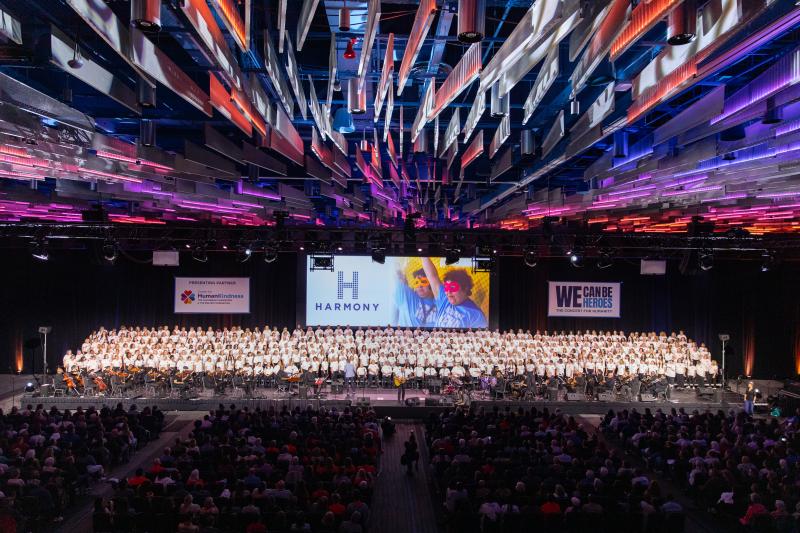
Harmony's 500-voice chorus and 40-piece band and orchestra in performance at the Columbus Convention Center in 2024. Photo courtesy of Harmony Project Productions, Inc.
NEA: What message do you hope the concert will convey about the role of community and the arts in promoting mental health and social connection?
BROWN: The concert aims to convey a powerful message about the transformative role of com-munity and the arts in fostering mental health and social connection. By uniting 1,000 diverse voices, the event will demonstrate how shared creative experiences break down barriers, pro-mote empathy, and cultivate a sense of belonging. It highlights that the arts are not just a form of expression but a vital tool for healing and uniting communities, underscoring the profound impact of collaboration and collective purpose on individual and societal well-being. And, equally imporant, it will demonstrate what is possible when we set aside our divisions and focus on our points of connection: in this case, the power of the arts to heal, restore, and rebuild communities.
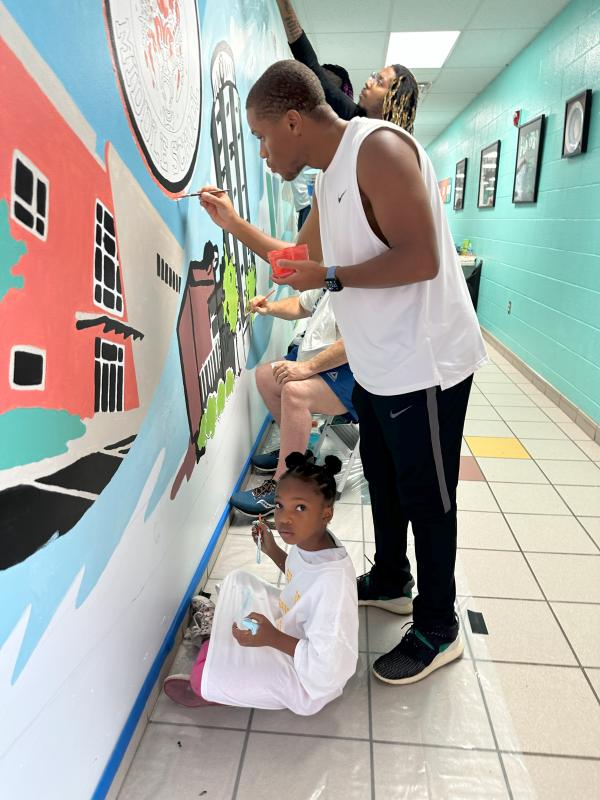
Chorus members work together to paint a mural at a local YMCA. Photo courtesy of Harmony Project Productions, Inc.
NEA: How will you measure the success of the project?
BROWN: The success of the Being Human project will be measured through both qualitative and quantitative outcomes such as the extent of participation across Ohio; feedback and data from participants, in collaboration with Ohio State University's Department of Psychiatry and Behavioral Health, regarding improvements in mental well-being, social connection, and a sense of belonging; the impact of the concert on the audience, through post-event surveys, social media engagement, and conversations around how the performance influenced their understanding of community and mental health; and the long-term relationships built between Harmony Project, local communities, service organizations, and mental health professionals, showing the continued integration of arts in community healing and development.
NEA: In your own words, complete the following sentence: Being human means…
BROWN: …embracing our differences, acknowledging our struggles, and utilizing the arts as a tool to build understanding and unity, all while promoting mental health and well-being for individuals and communities alike. Ultimately, being human means living authentically, intention-ally and compassionately—choosing to act in ways that uplift, connect, and empower others, and fostering a community where humanity is defined not just by what we are, but by what we do for one another. We are born human beings. We have no say in that. However, it is in being human where our voices have power. How we choose to use them will define our human experience.


